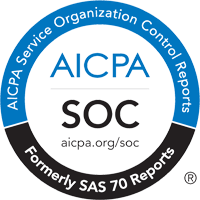Vertical Pod Autoscaling (VPA) is a component within Kubernetes designed to automatically resize the CPU and memory requests of pods based on their observed, historical usage patterns.
While Pepperdata Capacity Optimizer and VPA both change the resource requests of pods in response to changing application resource requirements, there are several key differences.
1. VPA Is Not A Real-Time Solution
VPA observes and learns an application's resource usage over time before adjusting the pods' resource requests. This process typically requires several hours at a minimum—which can result in performance degradation.
VPA Is Less Useful for Short-Duration Applications
This required learning period makes VPA a suboptimal solution for short-duration applications. By the time VPA has determined a suitable level of resources, the app could have already terminated.
VPA Has Limited Insight into Longer-Duration App Trends
VPA may also run into issues when applied to longer-duration applications. If VPA uses only a short history of resource usage data, it might miss longer-term trends or seasonal changes, which can lead to less effective optimization.
In contrast to VPA, Pepperdata Capacity Optimizer is real-time, automated resource optimization solution that works immediately, continuously, and at scale without requiring hours or more to analyze potentially outdated usage patterns—making Capacity Optimizer an effective solution for both short- and long-duration applications.
Capacity Optimizer can even optimize applications that run for just a few seconds, because it optimizes resources on nodes, not the applications themselves. Capacity Optimizer can also respond to unexpected traffic spikes in real time with no performance degradation.
SEE HOW PEPPERDATA SAVED A COMPANY $900K ANNUALLY
2. VPA Provides Ineffective Cluster Autoscaling Optimization
VPA may not optimize cluster autoscaling efficiently since it reduces resource requests after pods have already been launched. However, autoscaling decisions often occur before that point.
By contrast, Pepperdata Capacity Optimizer improves autoscaling efficiency by ensuring that the autoscaler launches nodes only once it has been determined that existing nodes are fully utilized. By reducing the occurrence of new nodes being launched when they are not truly needed, Capacity Optimizer saves the cost and resource waste of unnecessary scaleups. Note that this applies to both the default Cluster Autoscaler and Karpenter.
DISCOVER HOW CAPACITY OPTIMIZER PREVENTS UNECCESSARY SCALEUPS
3. VPA Can Introduce Delays Due to Pod Restarts
Finally, VPA may require pod restarts, which Capacity Optimizer never needs. Although a pod restart may only take a few seconds, it still can introduce a delay, which can be particularly challenging for stateful applications or workloads sensitive to downtime.
By contrast, because Capacity Optimizer updates the pods when they are launched, it never introduces delays due to pod restarts.
Summarizing, the three key points of difference between Pepperdata Capacity Optimizer and VPA are as follows:
|
VPA |
Capacity Optimizer |
| 1. Real-Time vs. Delayed |
Hours or more, while it observes and learns an application’s resource usage over time
|
Goes to work immediately upon installation since it operates in real time and requires no historical analysis |
| 2. Cluster Autoscaling Optimization |
Typically little to no impact on autoscaling due to post-launch pod resource request reduction
|
Significantly improves the efficiency of autoscaling by ensuring that new nodes are only added when existing nodes are fully utilized
|
| 3. Delays Due to Pod Restarts |
Common |
Never |
Visit us at pepperdata.com to discover more about real-time, automated resource optimization for Kubernetes that requires no manual tuning, no recommendations, and no application code changes.




